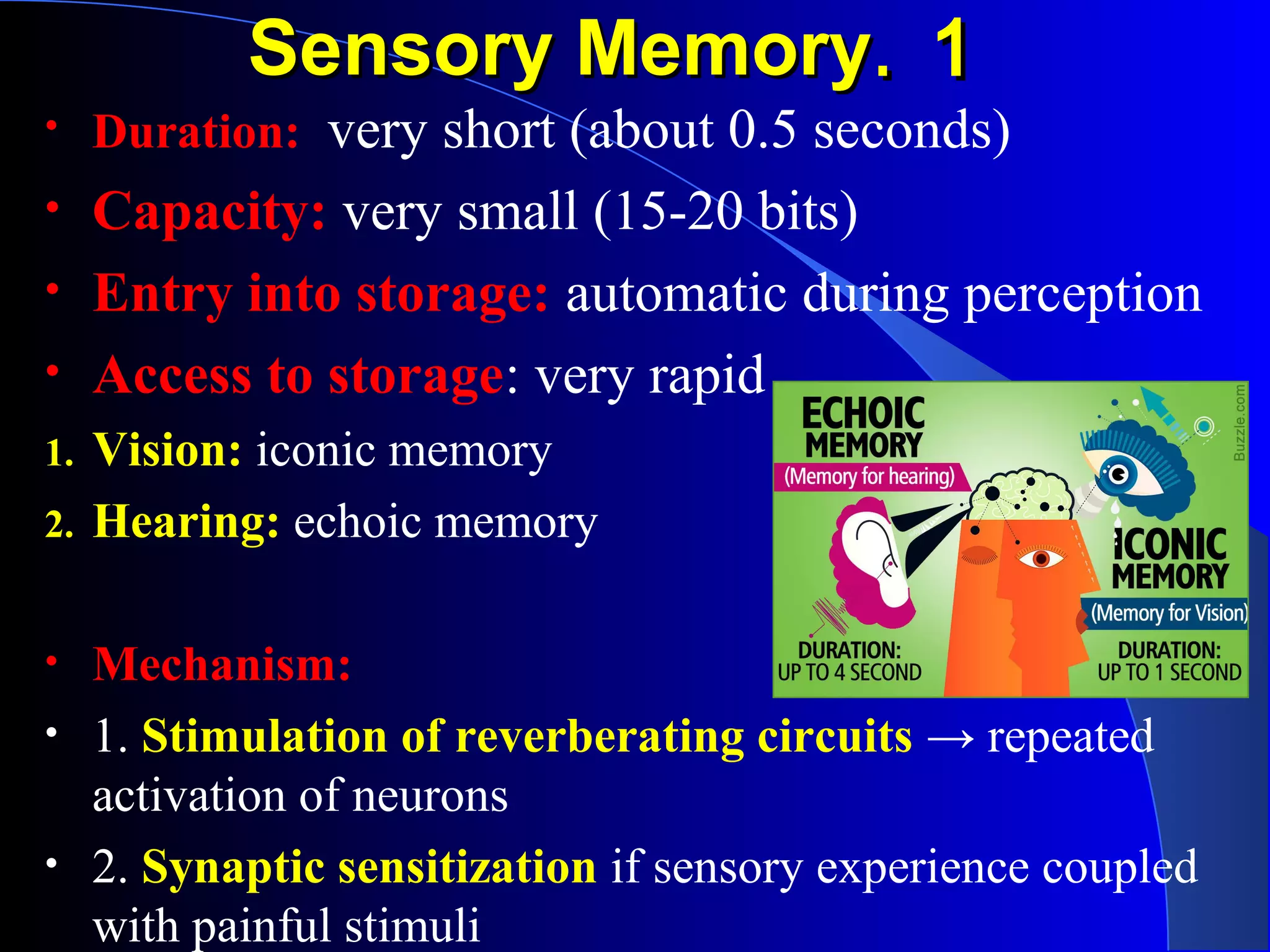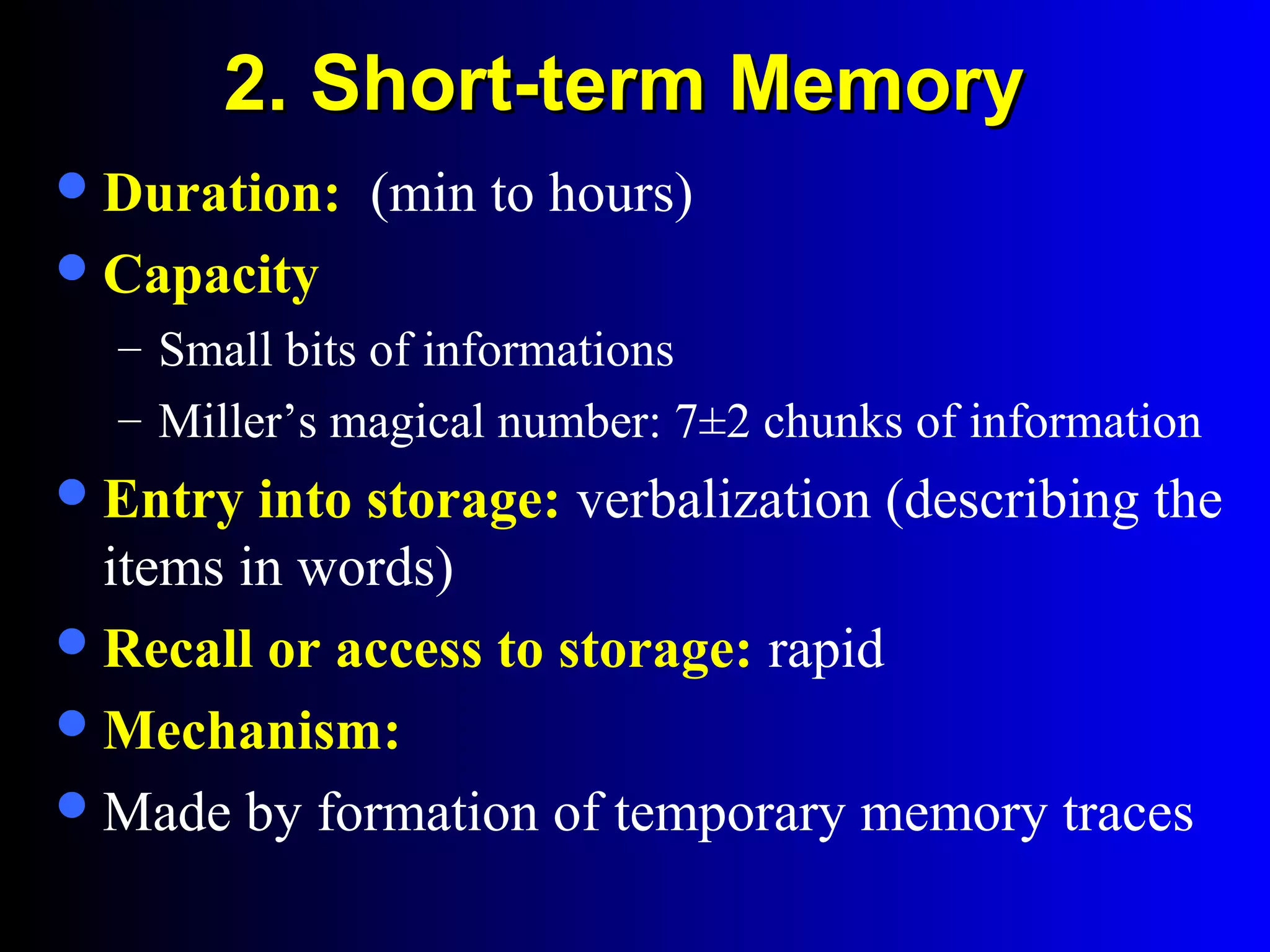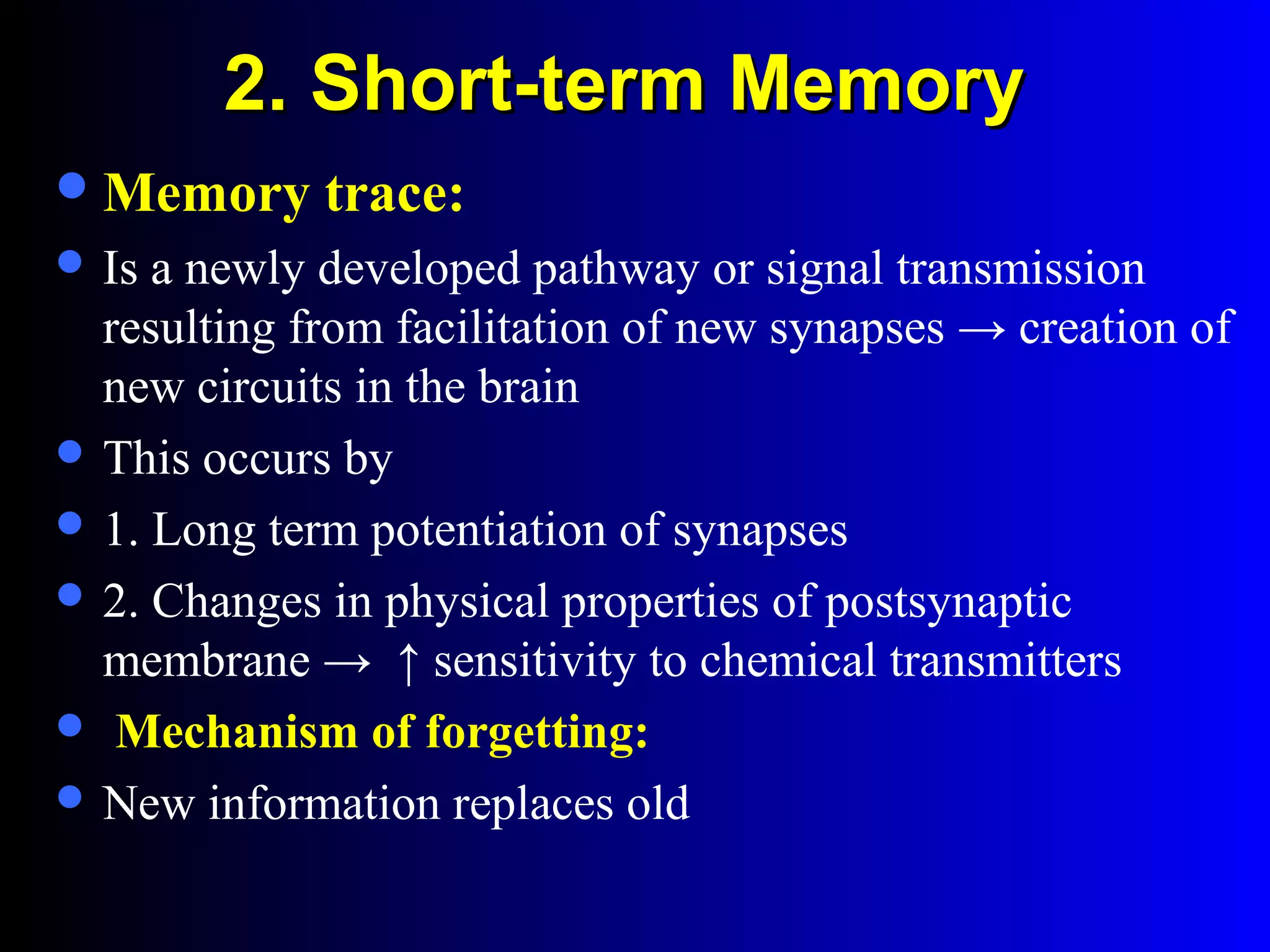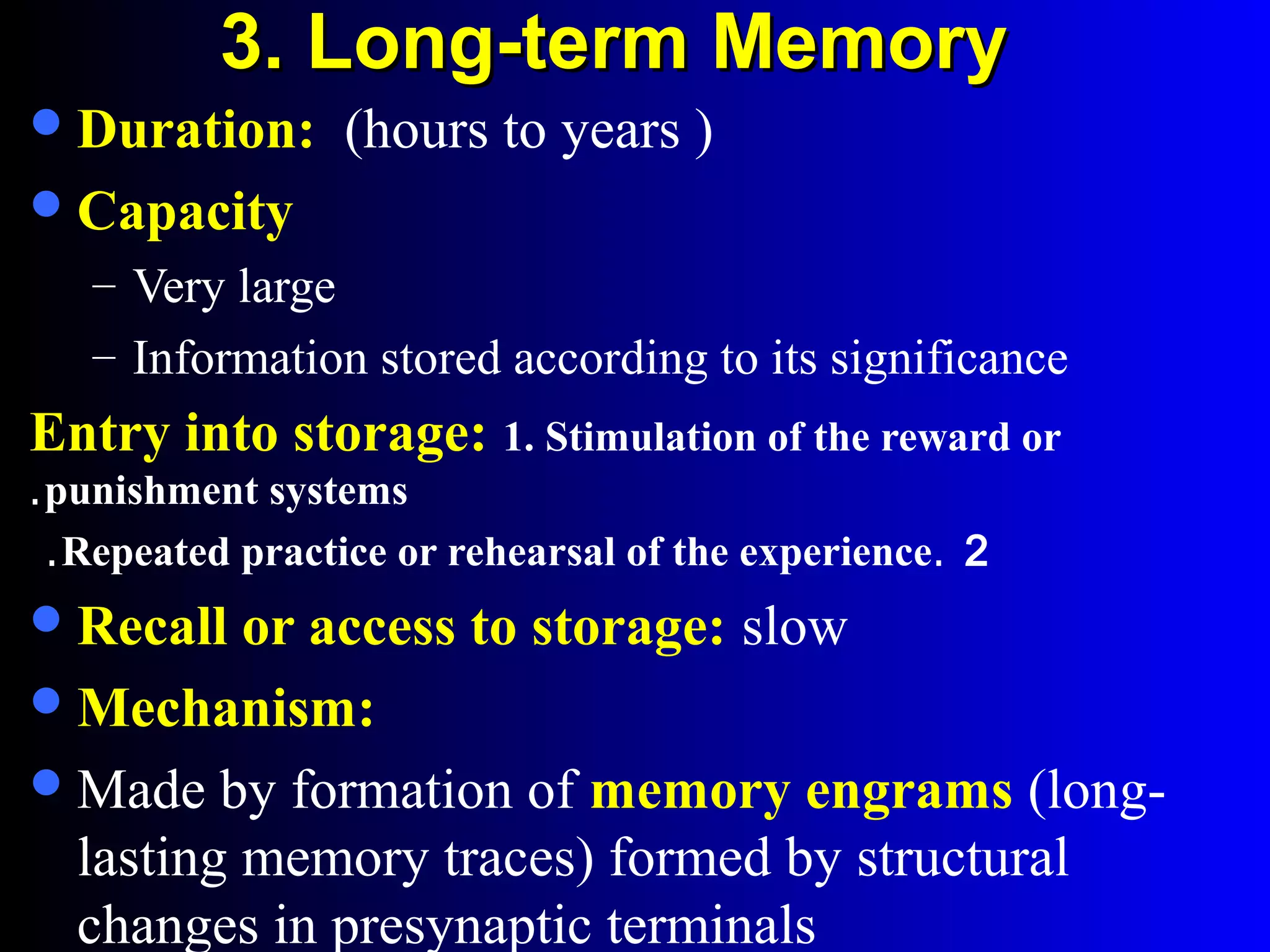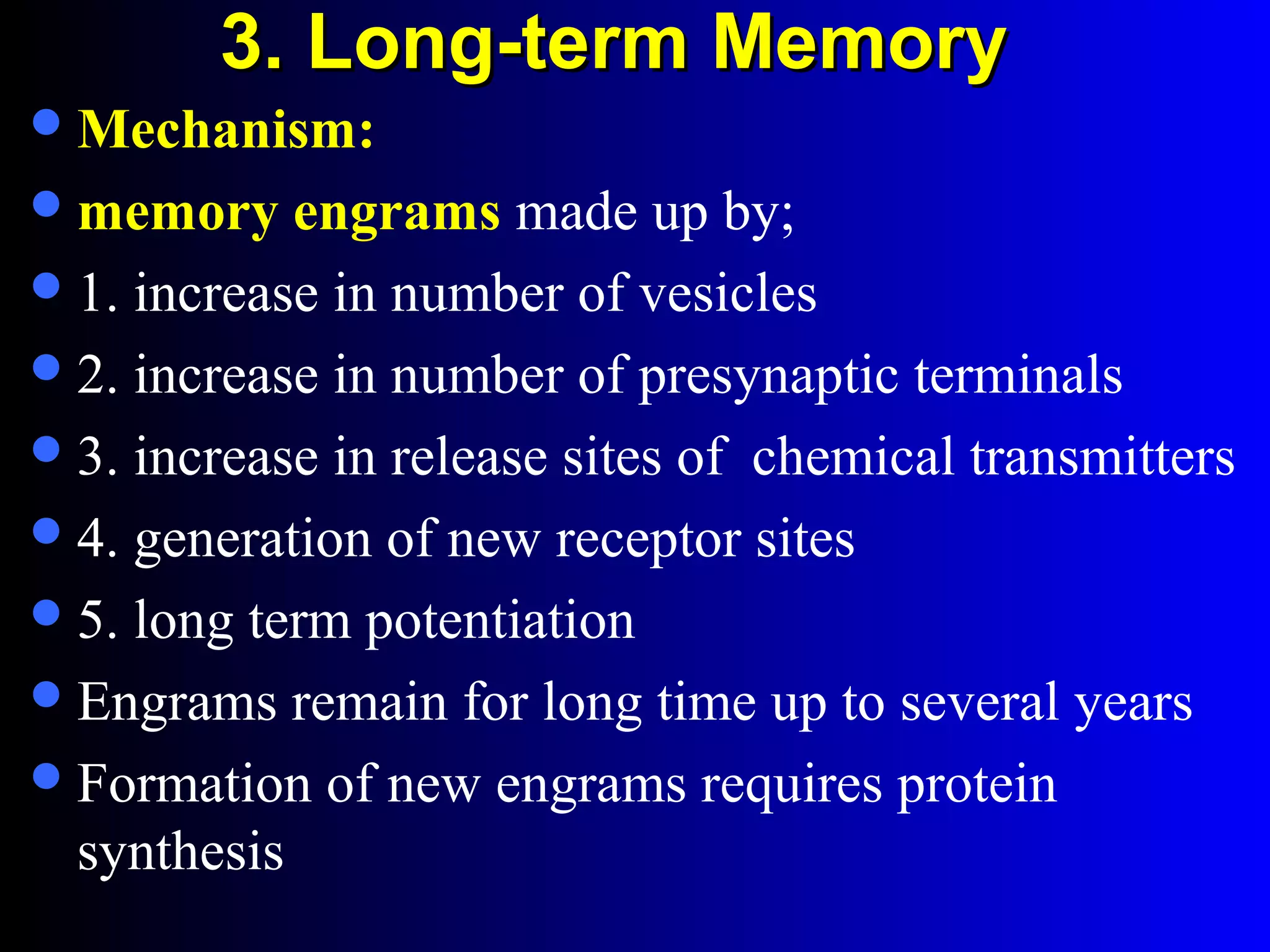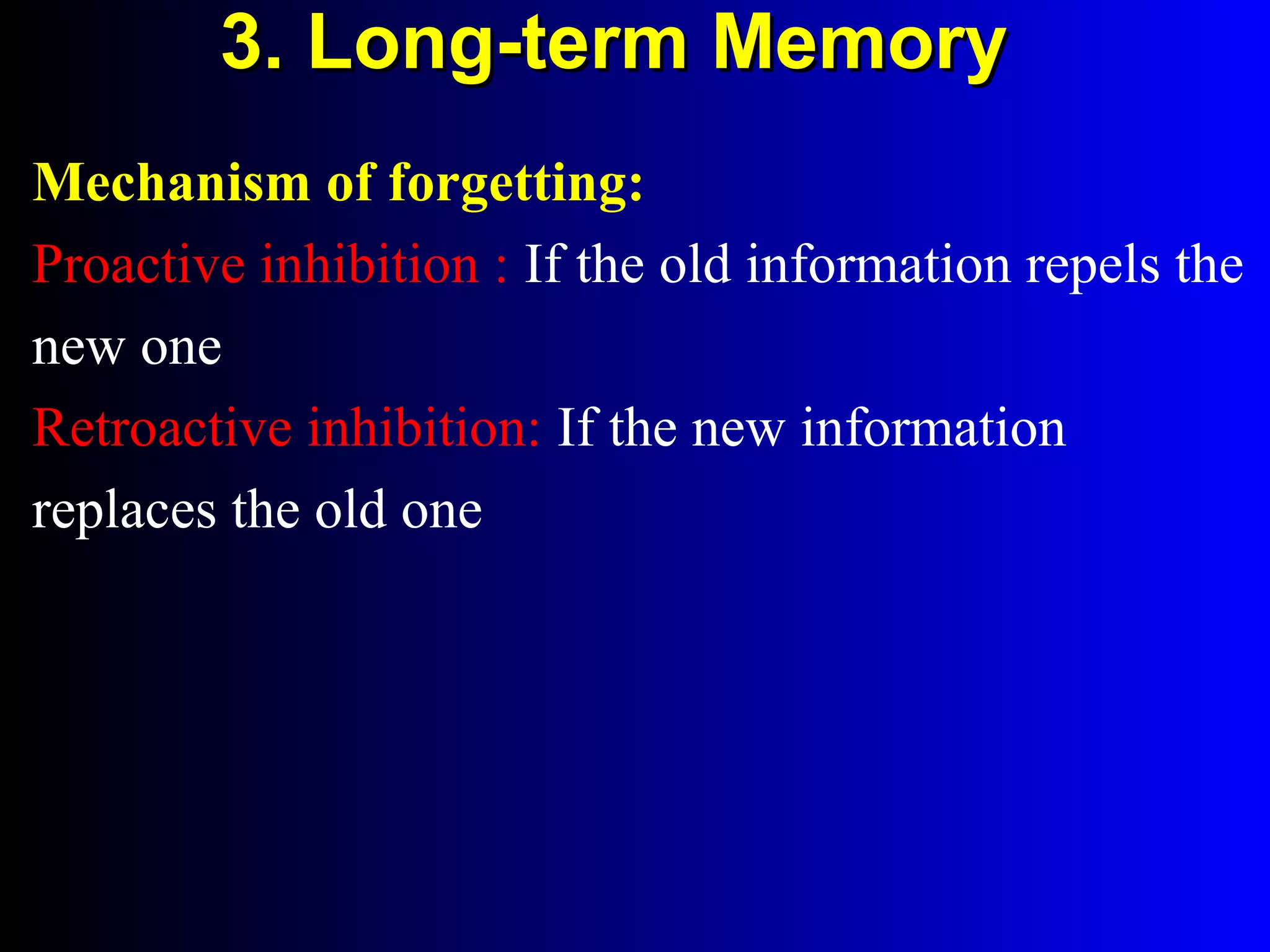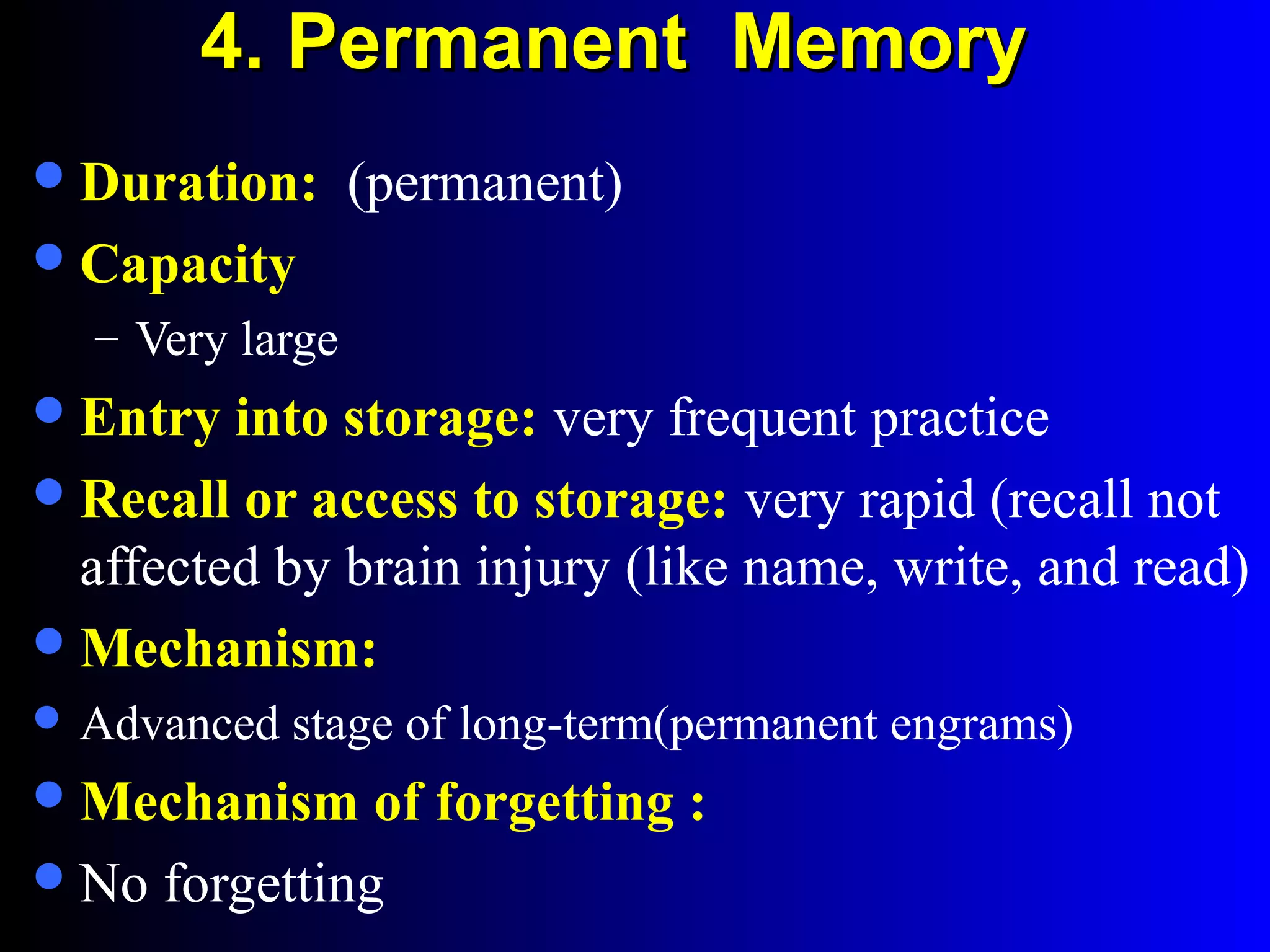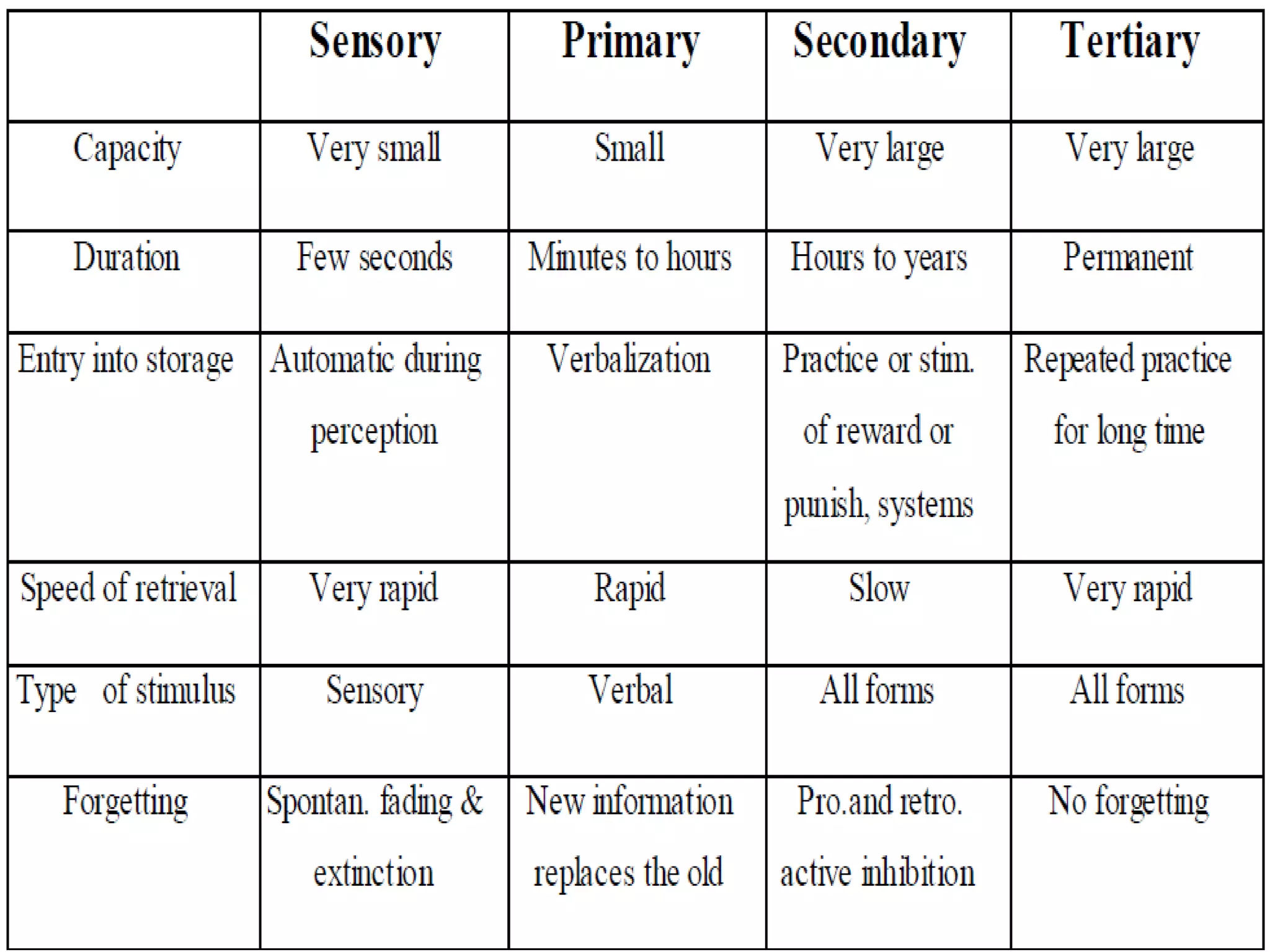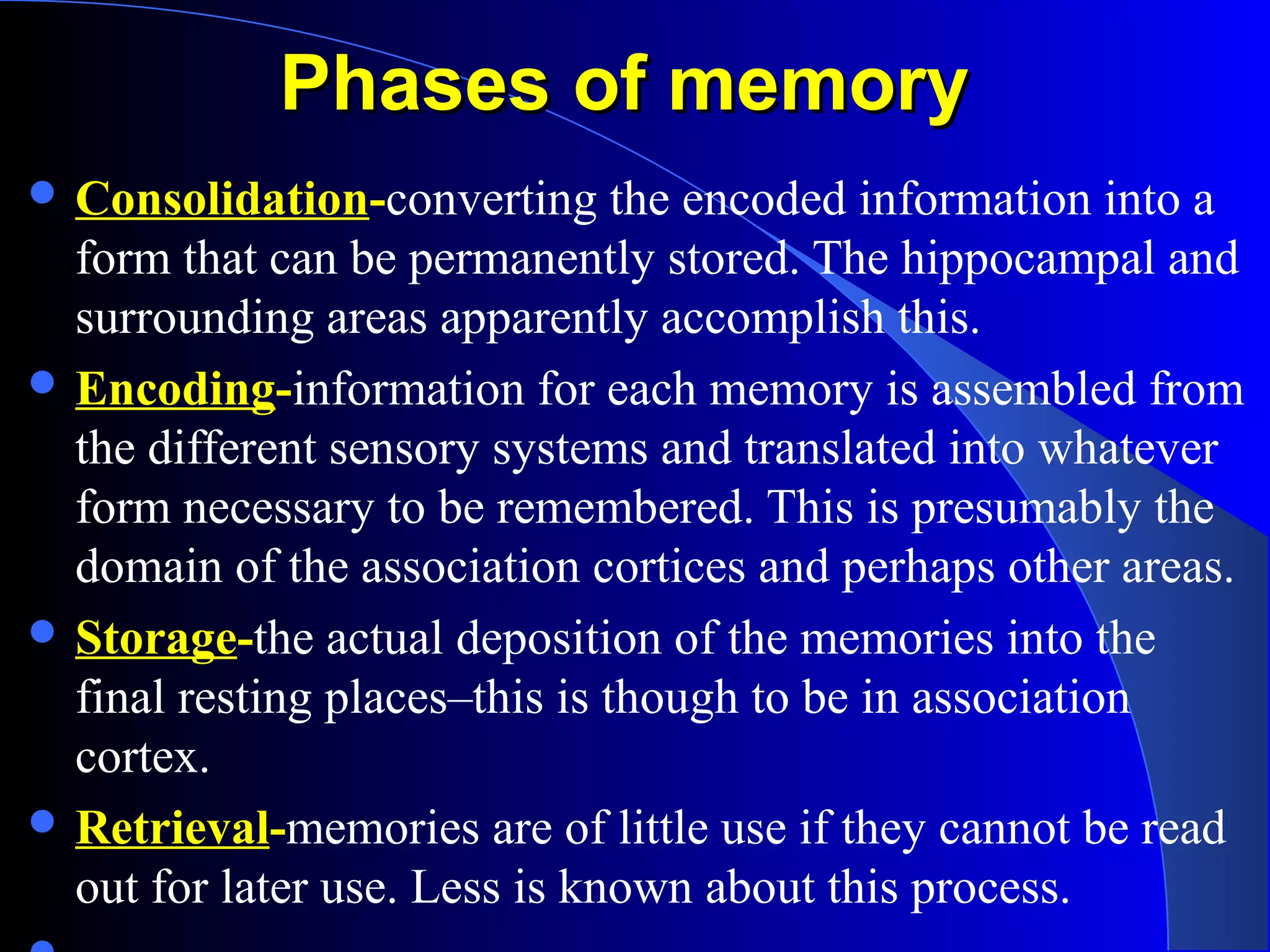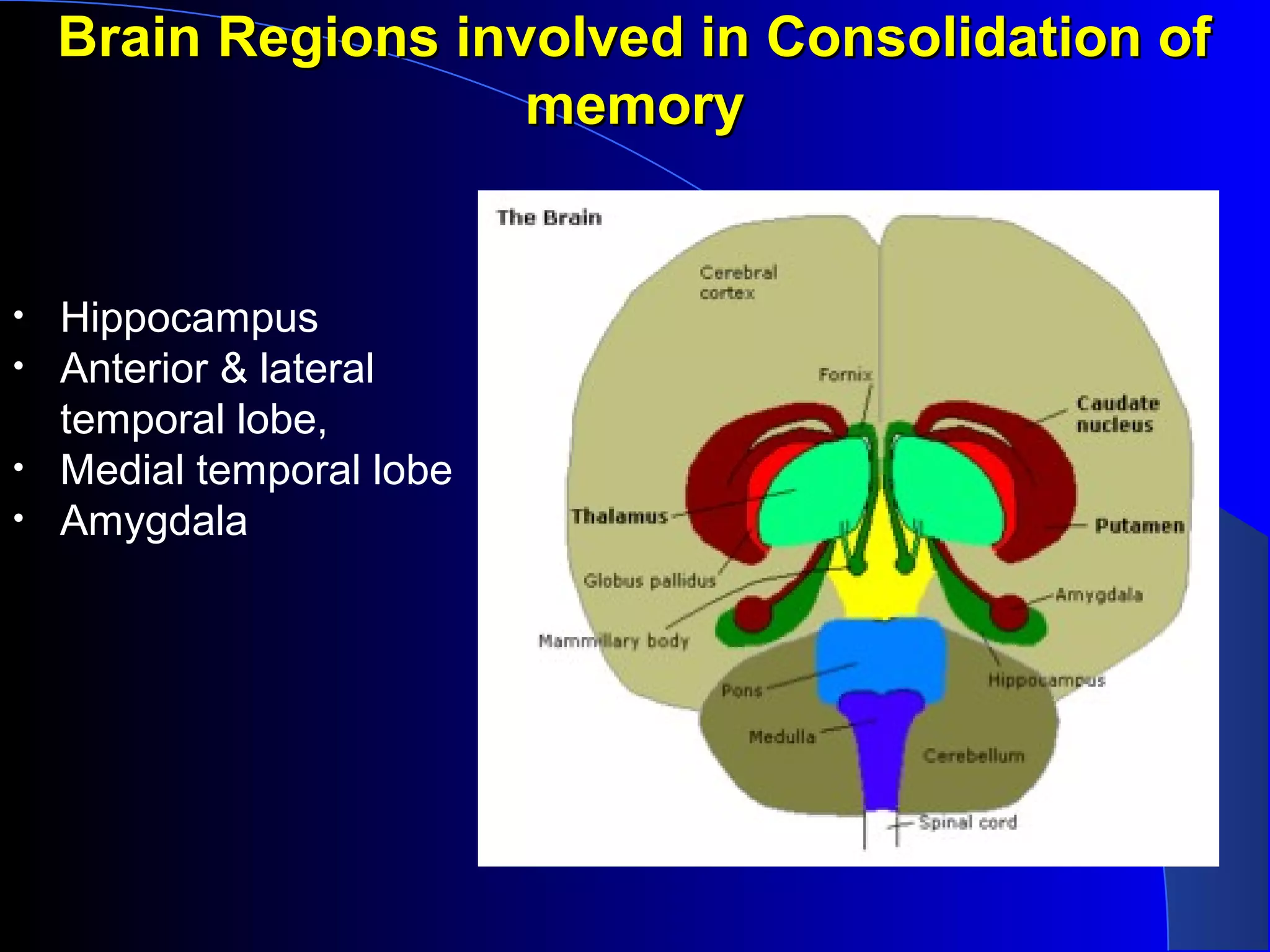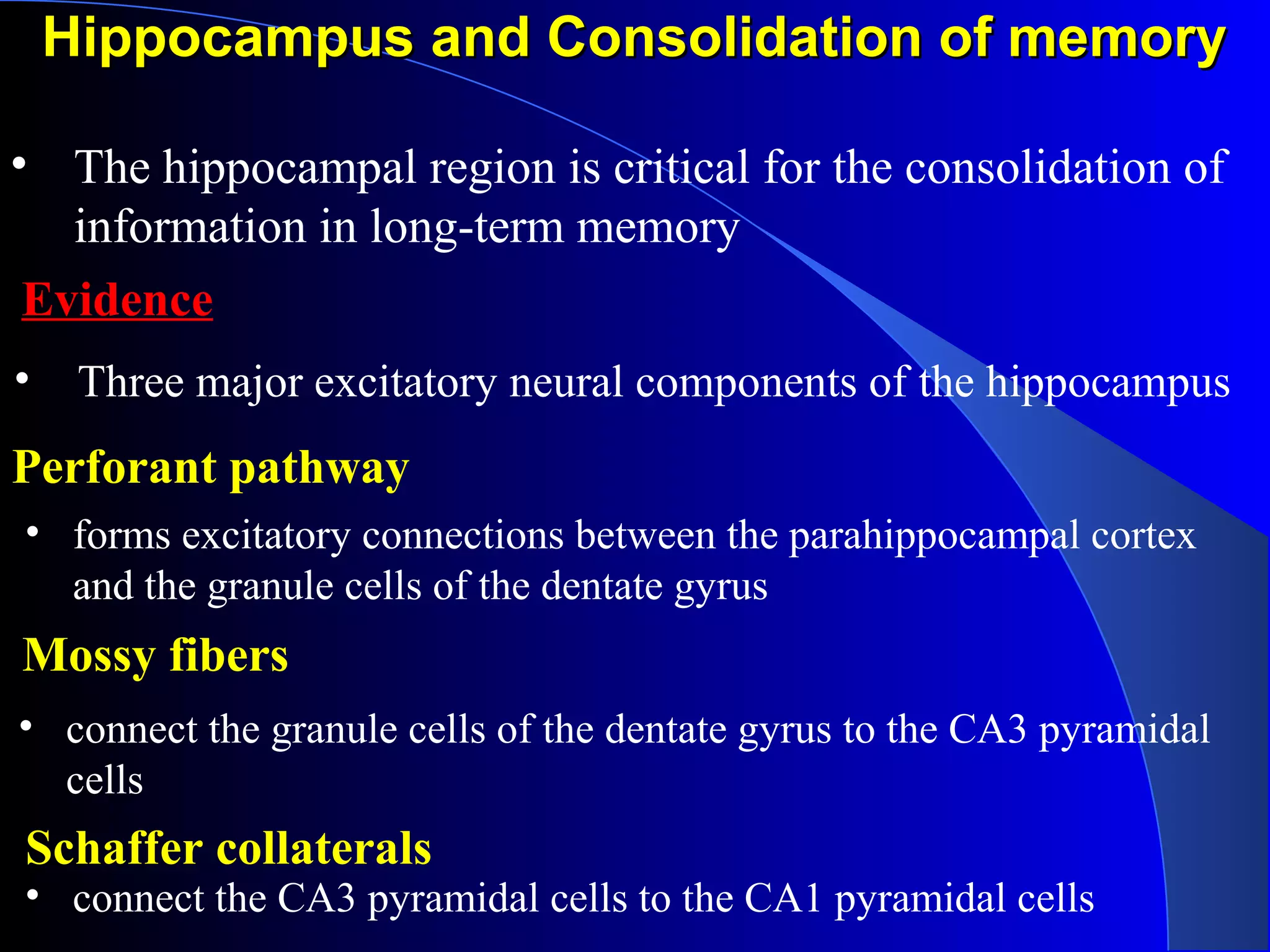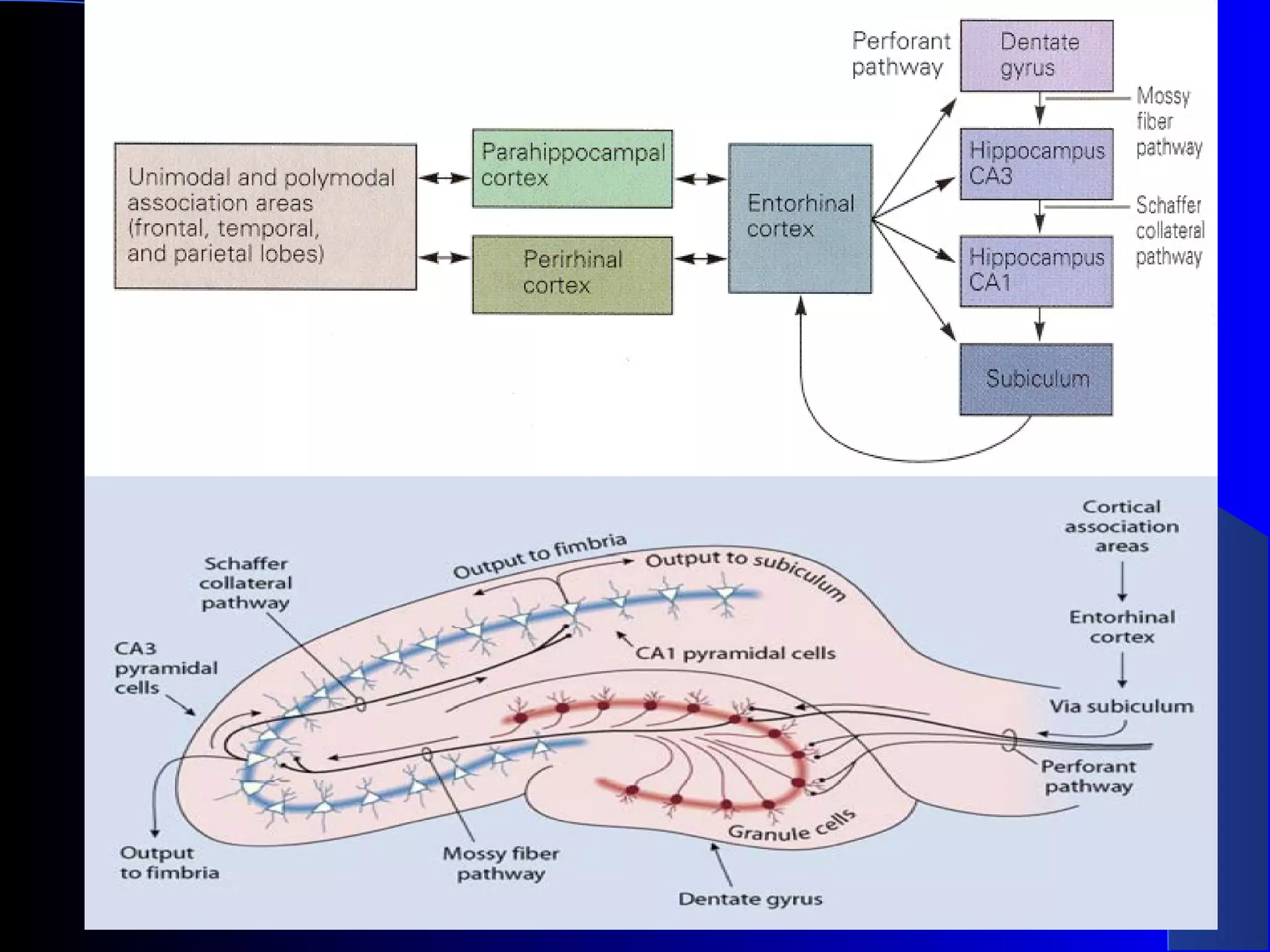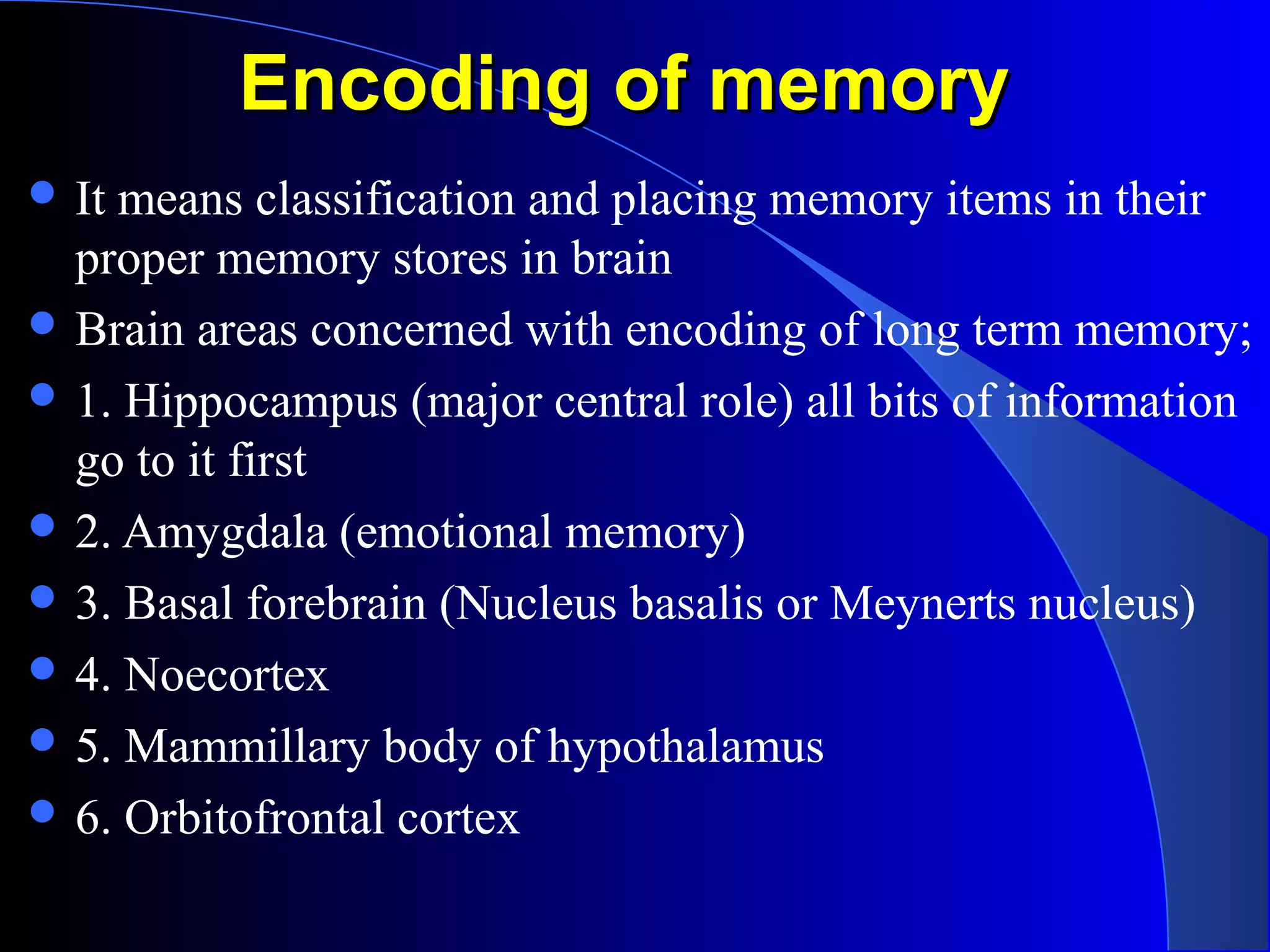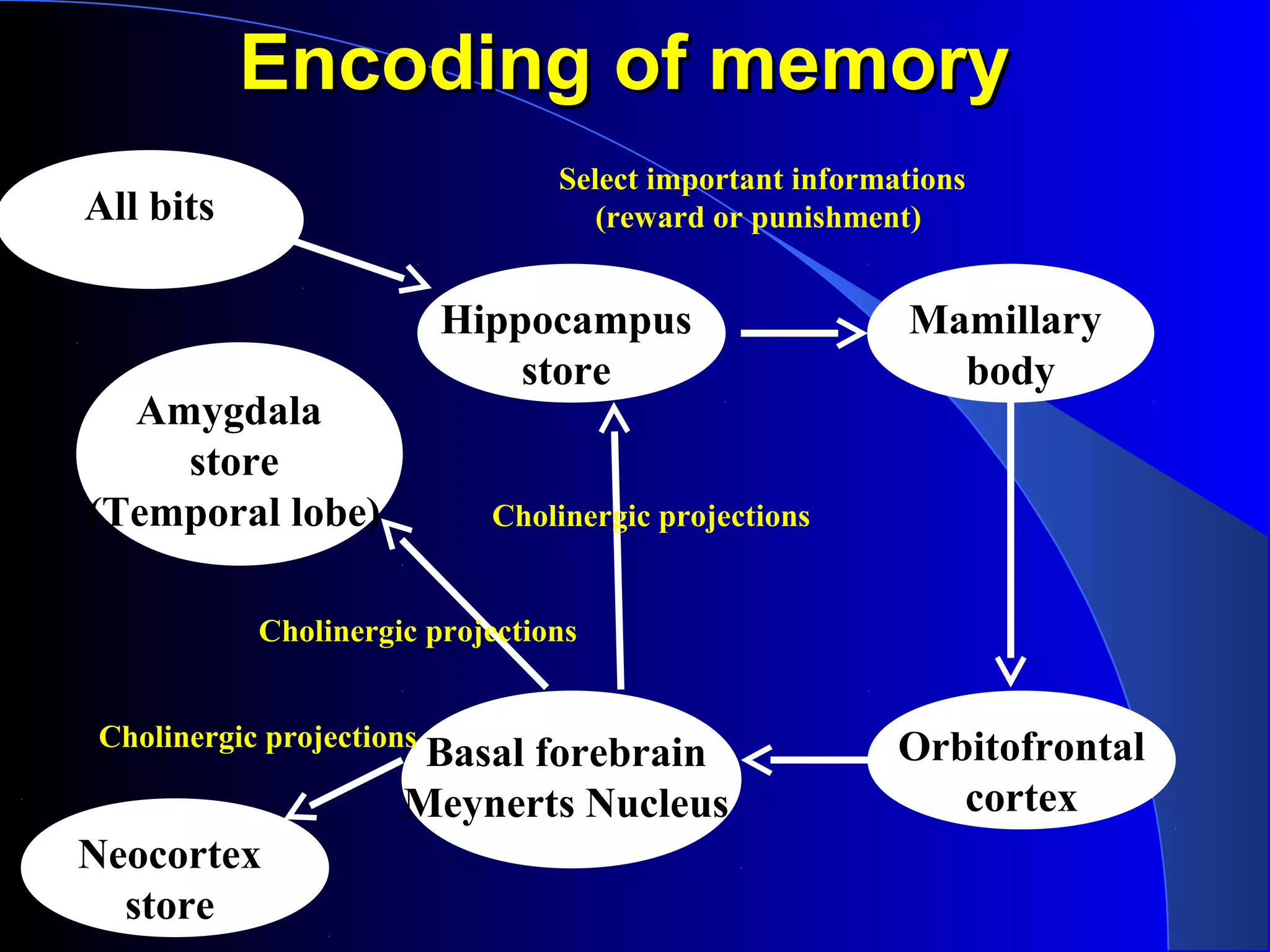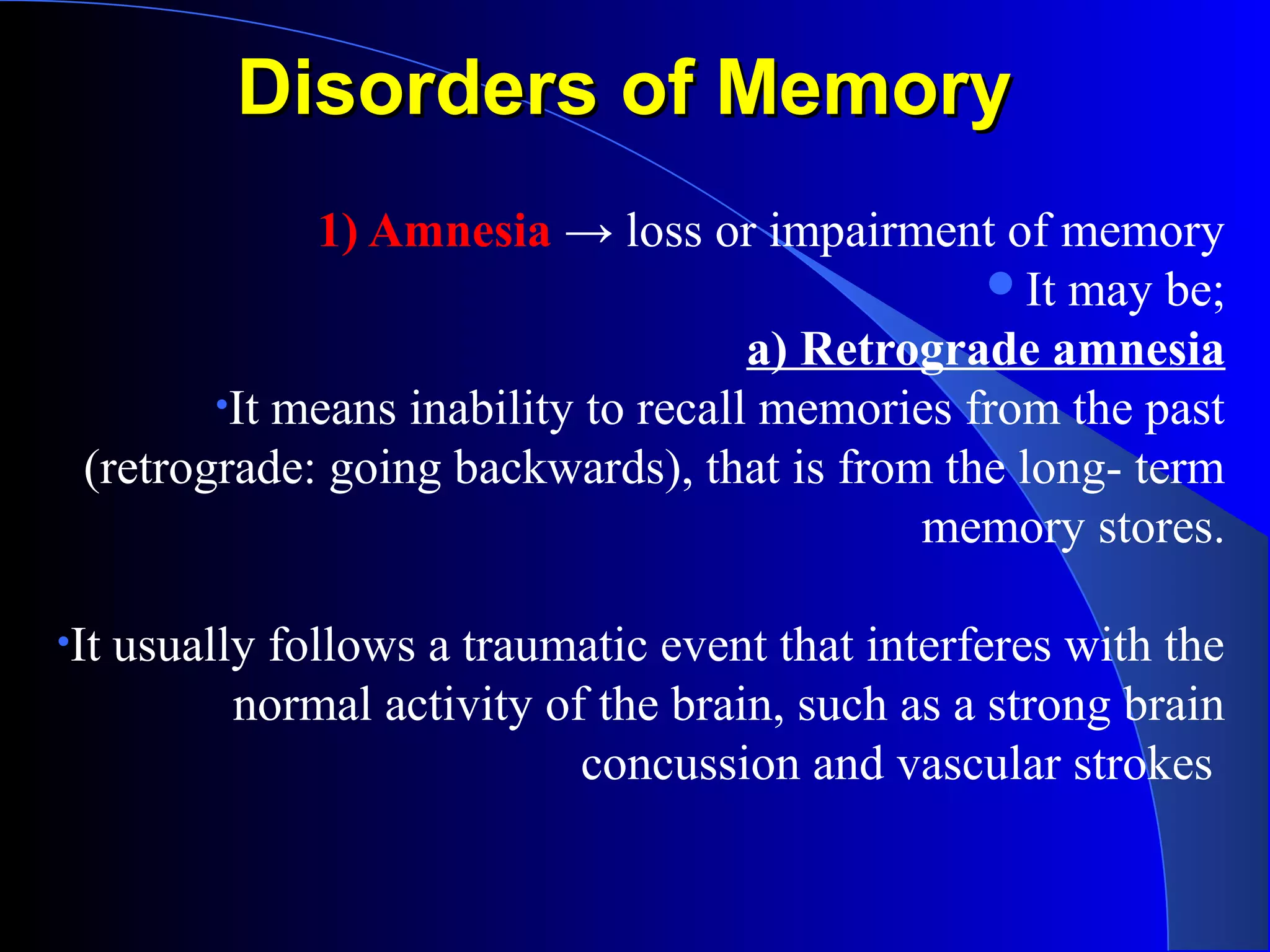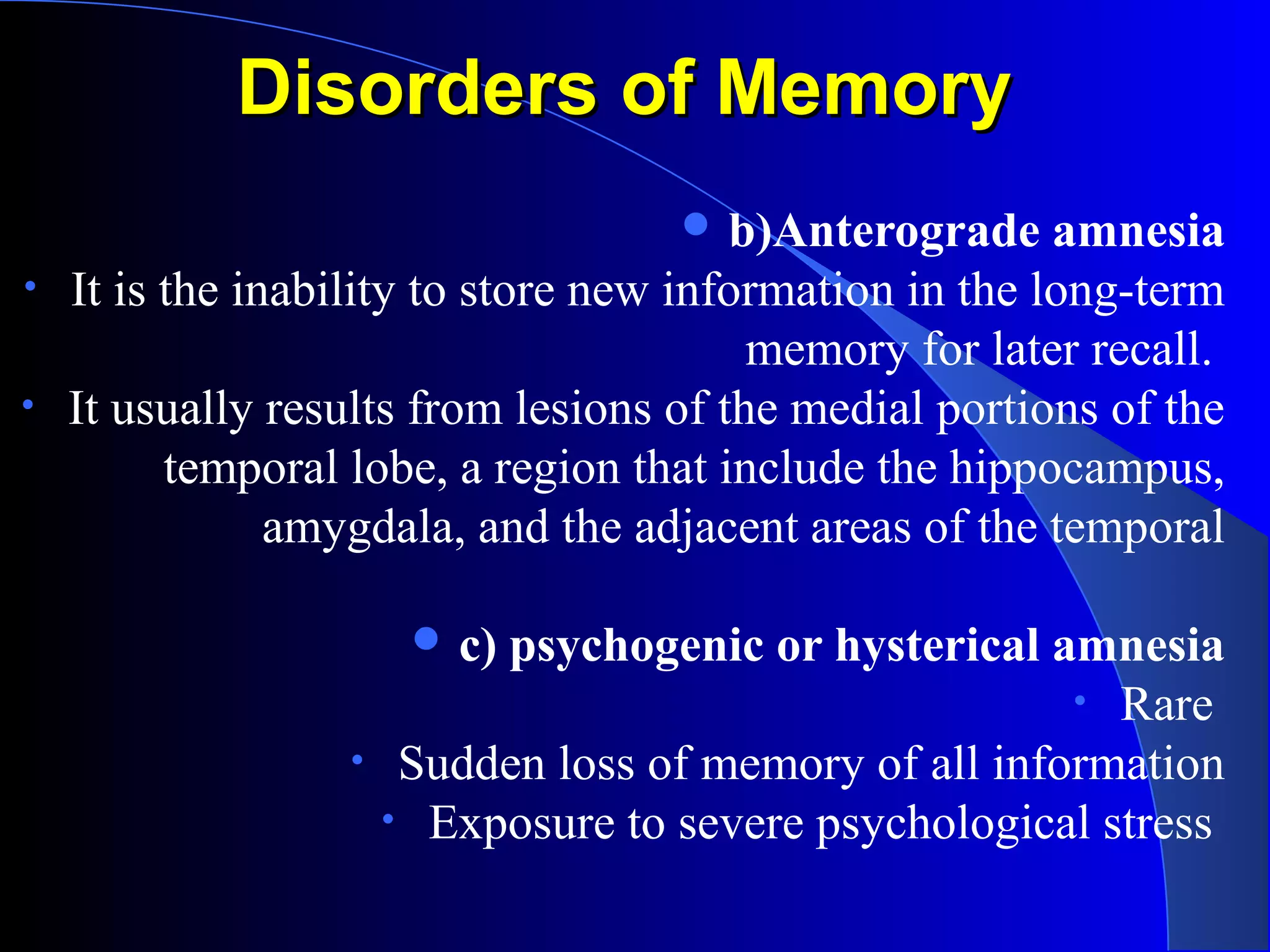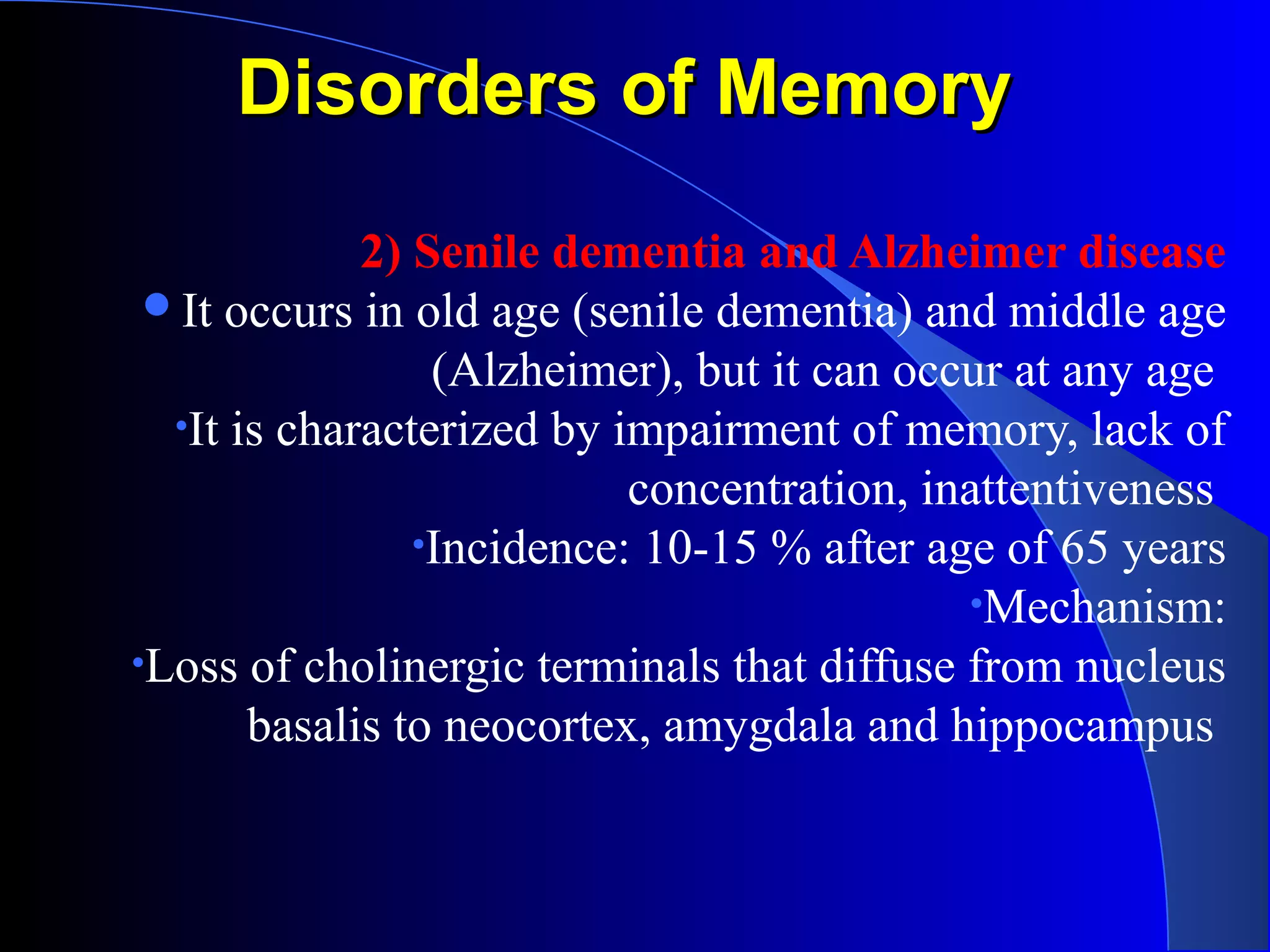Memory is the ability of the brain to store and recall information over time. There are four main types of memory: sensory memory (up to 0.5 seconds), short-term memory (minutes to hours), long-term memory (hours to years), and permanent memory. Information enters the brain and is either selected and stored in memory traces through processes like long-term potentiation, or neglected and forgotten. The hippocampus plays a key role in consolidating memories from short-term to long-term storage. Disorders like amnesia and Alzheimer's disease can impair memory formation and recall.

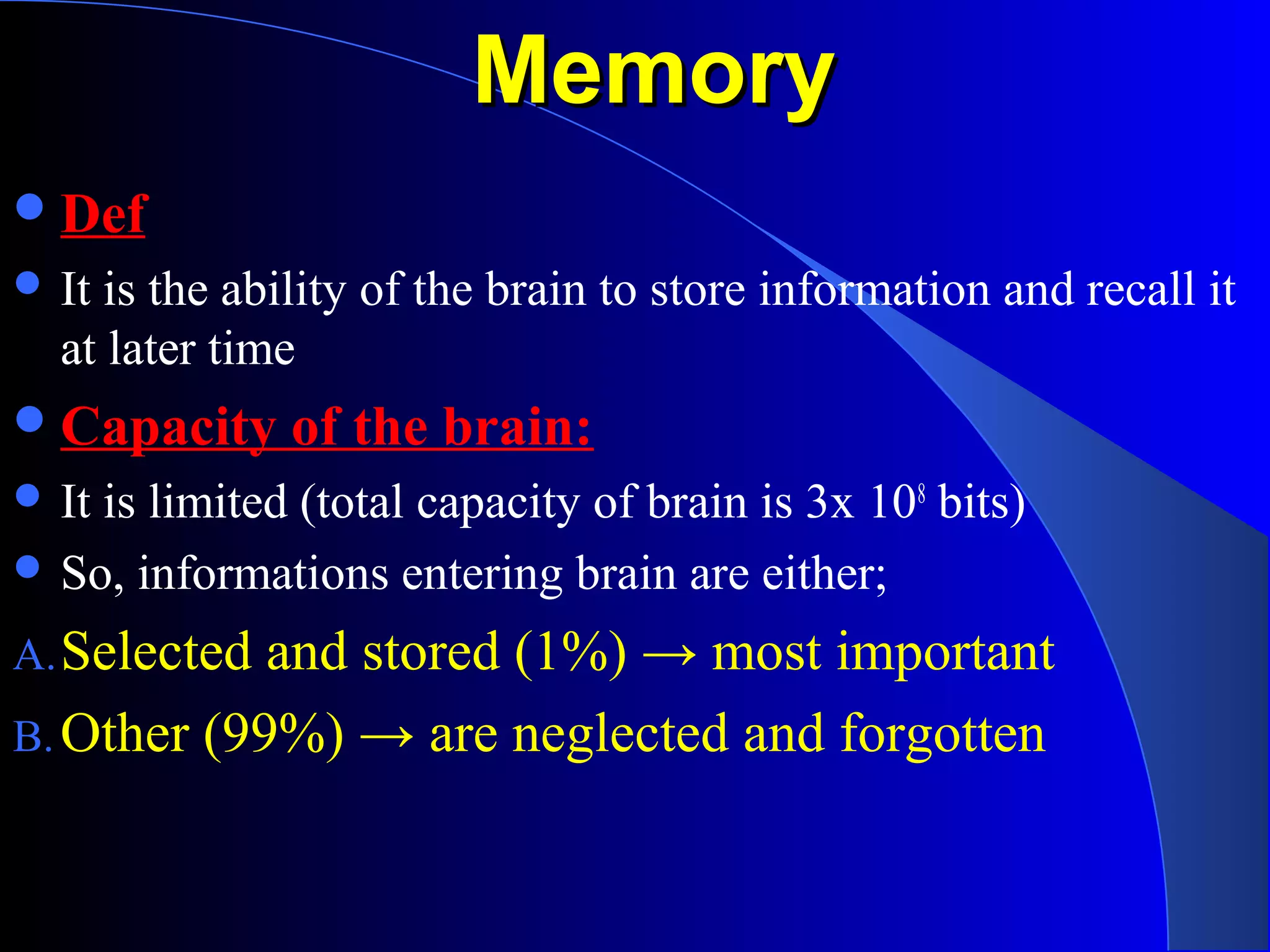
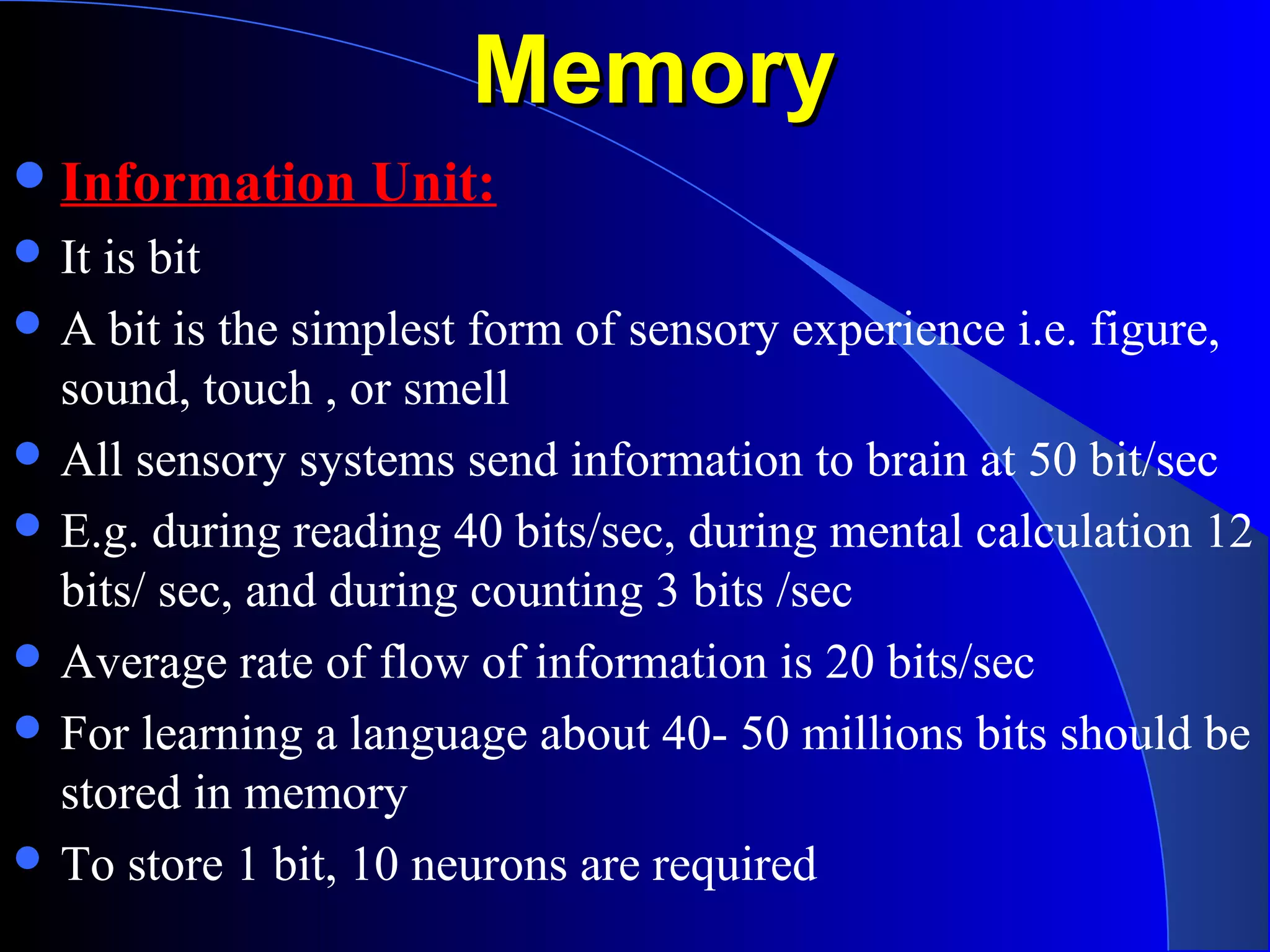
![MemoryMemory
Types of memory:
There are four different types of memory:
[I] SENSORY MEMORY (Immediate memory).
[II] PRIMARY MEMORY (Short-term memory)
[III] SECONDARY MEMORY (Long-term memory)
[IV] TERTIARY MEMORY (permanent memory)](https://image.slidesharecdn.com/physiologyofmemoryandlearning-copy-181022010144/75/Physiology-of-memory-and-learning-4-2048.jpg)
